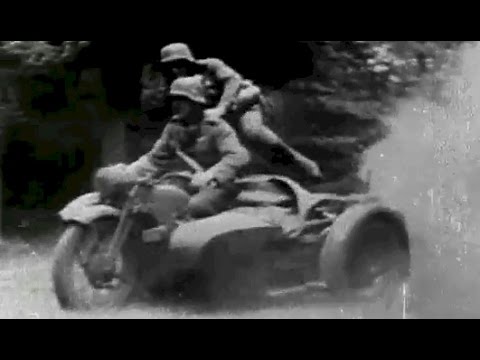more at
A look at Poland and the plight of the Poles during World War II.
Public domain film from the Prelinger Archives, slightly cropped to remove uneven edges, with the aspect ratio corrected, and mild video noise reduction applied.
The soundtrack was also processed with volume normalization, noise reduction, clipping reduction, and/or equalization (the resulting sound, though not perfect, is far less noisy than the original).
The History of Poland (1939–45) encompasses primarily the period from the Invasion of Poland by Nazi Germany to the end of World War II. The outbreak of the war followed the period of intense armament by Nazi Germany and other neighbors of Poland, with which Poland was unable to keep up because of the country’s fundamental economic weakness.
Following the German-Soviet non-aggression treaty, Poland was invaded by Nazi Germany on 1 September 1939 and by the Soviet Union on 17 September. The campaigns ended in early October with Germany and the Soviet Union dividing and annexing the whole of Poland. After the German attack on the Soviet Union in summer 1941, Poland was occupied by Germany alone.
Under the two occupations, Polish citizens suffered enormous human and material losses. It is estimated that about 5.7 million Polish citizens died as a result of the German occupation and about 150,000 Polish citizens died as a result of the Soviet occupation. Ethnic Poles were subjected to both the Nazi and Soviet persecution. The Jews were singled out by the Germans for a quick and total annihilation and about 90% of Polish Jews (close to three million people) were murdered. Jews and others were killed en masse at Nazi extermination camps, such as Auschwitz, Treblinka and Sobibór. Ethnic cleansing and massacres of civilian populations, mostly Poles, were perpetrated in western Ukraine from 1943. The historically unprecedented war crimes committed in Poland were divided at the postwar Nuremberg trials into three main categories of wartime criminality: waging a war of aggression, war crimes, and crimes against humanity.
A Polish resistance movement began organizing soon after the invasions in 1939. Its largest military component was a part of the Polish Underground State network of organizations and activities and became known as the Home Army. The whole clandestine structure was formally directed by the Polish government-in-exile through its delegation resident in Poland. There were also peasant, right wing, leftist and Jewish partisan organizations. Among the anti-German uprisings waged were the Warsaw Ghetto Uprising and the Warsaw Uprising. The latter was a late (August-September 1944), large-scale and ill-fated attempt to prevent the Soviet Union from dominating Poland’s postwar government.
Collaboration with the occupiers was limited. The Nazis planned a permanent elimination of any form of Polish statehood and even a longer-term destruction of the Polish nation.
In September 1939 the Polish government officials sought refuge in Romania, but their subsequent internment there prevented the intended continuation abroad as the government of Poland. General Władysław Sikorski, a former prime minister, arrived in France, where a replacement government in exile was soon formed. After the fall of France the Polish government was evacuated to Britain. It was torn by a conflict between the post-Sanation and anti-Sanation elements, with the latter, led by Prime Minister Sikorski, gaining the upper hand because of the support of the French and then the British government. The Polish armed forces had been reconstituted and fought alongside the Western Allies in France, Britain and elsewhere.
In order to cooperate with the Soviet Union, after the German attack an important war ally of the West, Sikorski negotiated in Moscow with Joseph Stalin and the formation of a Polish army in the Soviet Union was agreed, intended to fight on the Eastern Front alongside the Soviets. The “Anders’ Army” was indeed created, but with the Soviet and British permission was instead taken to the Middle East. Further attempts at a Polish-Soviet cooperation were made, but they failed because of the disagreements over the borders, the discovery of the Katyn massacre of Polish POWs perpetrated by the Soviets, and the death of General Sikorski.
Stalin pursued a strategy of facilitating the formation of a Polish government independent of (and in opposition to) the exile government in London. He empowered the Polish communists, whose party he eliminated in 1938 by murdering most of its activists…
Poland was still to experience much internal turbulence and power struggle, but barring the West’s war with the Soviet Union, the Soviet domination was a foregone conclusion…

